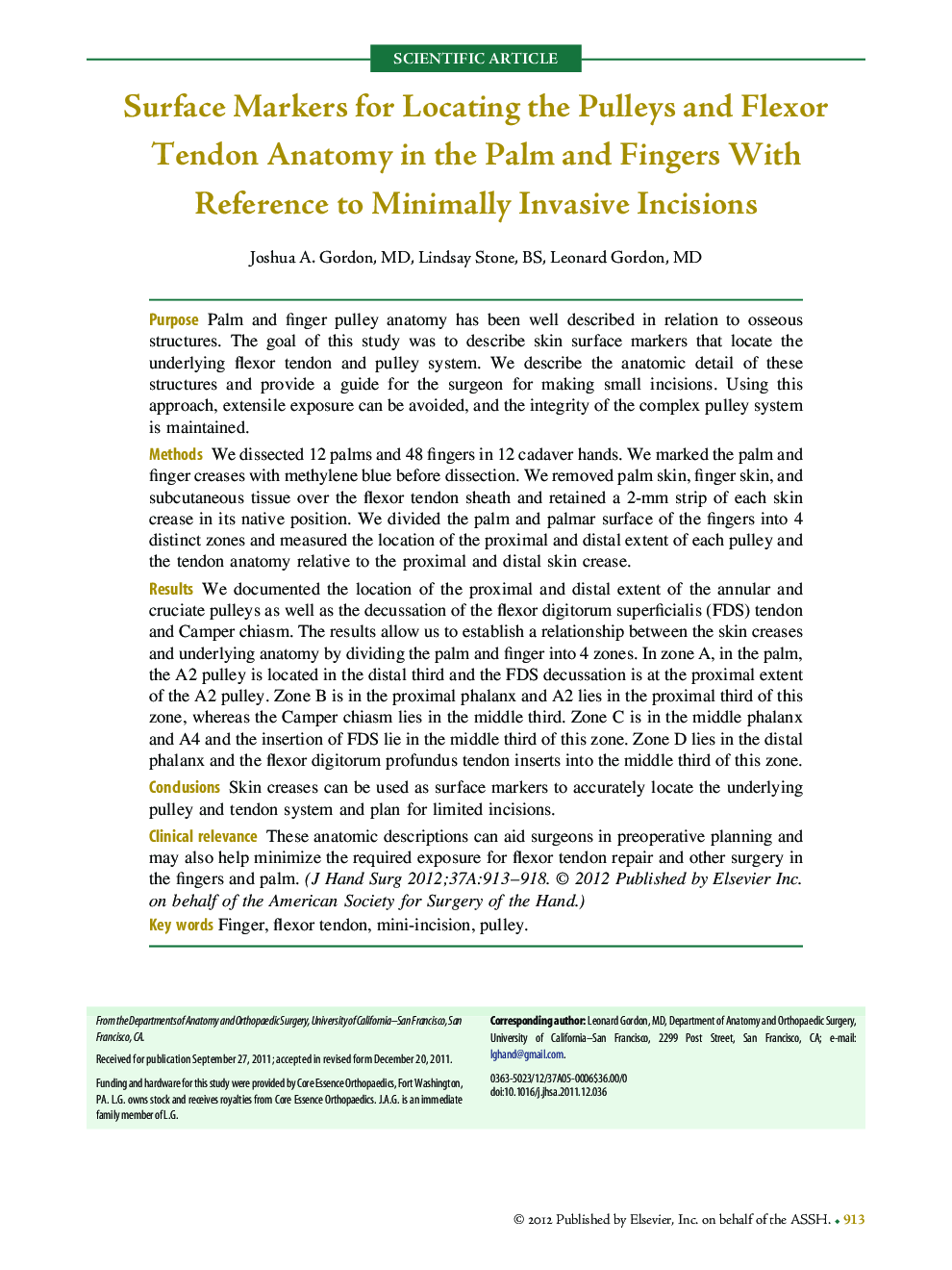| Article ID | Journal | Published Year | Pages | File Type |
|---|---|---|---|---|
| 4068970 | The Journal of Hand Surgery | 2012 | 6 Pages |
PurposePalm and finger pulley anatomy has been well described in relation to osseous structures. The goal of this study was to describe skin surface markers that locate the underlying flexor tendon and pulley system. We describe the anatomic detail of these structures and provide a guide for the surgeon for making small incisions. Using this approach, extensile exposure can be avoided, and the integrity of the complex pulley system is maintained.MethodsWe dissected 12 palms and 48 fingers in 12 cadaver hands. We marked the palm and finger creases with methylene blue before dissection. We removed palm skin, finger skin, and subcutaneous tissue over the flexor tendon sheath and retained a 2-mm strip of each skin crease in its native position. We divided the palm and palmar surface of the fingers into 4 distinct zones and measured the location of the proximal and distal extent of each pulley and the tendon anatomy relative to the proximal and distal skin crease.ResultsWe documented the location of the proximal and distal extent of the annular and cruciate pulleys as well as the decussation of the flexor digitorum superficialis (FDS) tendon and Camper chiasm. The results allow us to establish a relationship between the skin creases and underlying anatomy by dividing the palm and finger into 4 zones. In zone A, in the palm, the A2 pulley is located in the distal third and the FDS decussation is at the proximal extent of the A2 pulley. Zone B is in the proximal phalanx and A2 lies in the proximal third of this zone, whereas the Camper chiasm lies in the middle third. Zone C is in the middle phalanx and A4 and the insertion of FDS lie in the middle third of this zone. Zone D lies in the distal phalanx and the flexor digitorum profundus tendon inserts into the middle third of this zone.ConclusionsSkin creases can be used as surface markers to accurately locate the underlying pulley and tendon system and plan for limited incisions.Clinical relevanceThese anatomic descriptions can aid surgeons in preoperative planning and may also help minimize the required exposure for flexor tendon repair and other surgery in the fingers and palm.
